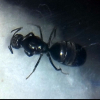Hey guys!
I currently have around a dozen Messor colonies with different speeds of development, ranging from 2 (brood boosted) ants for 2 queens that kept on freaking out and eating their eggs, to other colonies with around one hundred ants.
They are too many and I'm quite overwhelmed with all of them. I caught a nupcial flight and brought way too many home with me, and their survival rate was well beyond what I had expected.
They take me a lot of time to feed, clean, build formicaria for them, run after escapees, etc.
I don't know many ant keepers here in Portugal and the few rare I know already have Messors and don't want more.
So I'd like to keep just a small number of them and I'm thinking about releasing the other ones into the wild.
But if I do this I want to do it the best way for them.
Please note that these Messors are a local species, so I won't be interfering with the local ecosystem.
Summer has ended and the 1st rains have arrived here, so I don't think this is the best time of the year to do it. Or is it, since this is about the time of their nupcial flights?
They didn't spend the summer collecting and gathering seeds, so they don't have a good food stock for the winter.
So I'm thinking the best thing is to keep them through the winter, let them hibernate, and do it after they wake up and get back to rhythm.
I'm planning in finding a good place for them where they can find food nearby and then place their test tubes or formicaria at the shade, covered away from sunlight and extreme temperatures, on a place with good ground for them to dig in.
I'm thinking about taking by battery powered drill and my longest drill bit, and drill a whole on the ground for them as a start up. I don't know if they'll use it, but if they want to, it's there for them.
I'll leave a test tube with water and leave some seeds piled up for them for near term food until they dig a new home and get to know the surroundings.
I'll try to find a place that is not overcrowded with ant colonies, to minimize the risk of territorial fighting that can lead to the loss of individuals that are critically needed in this initial phase.
Well... Food, water, good land, shade and away from extreme temperatures... Am I missing anything?
What are your thoughts about this?
Thanks for any hints.
















